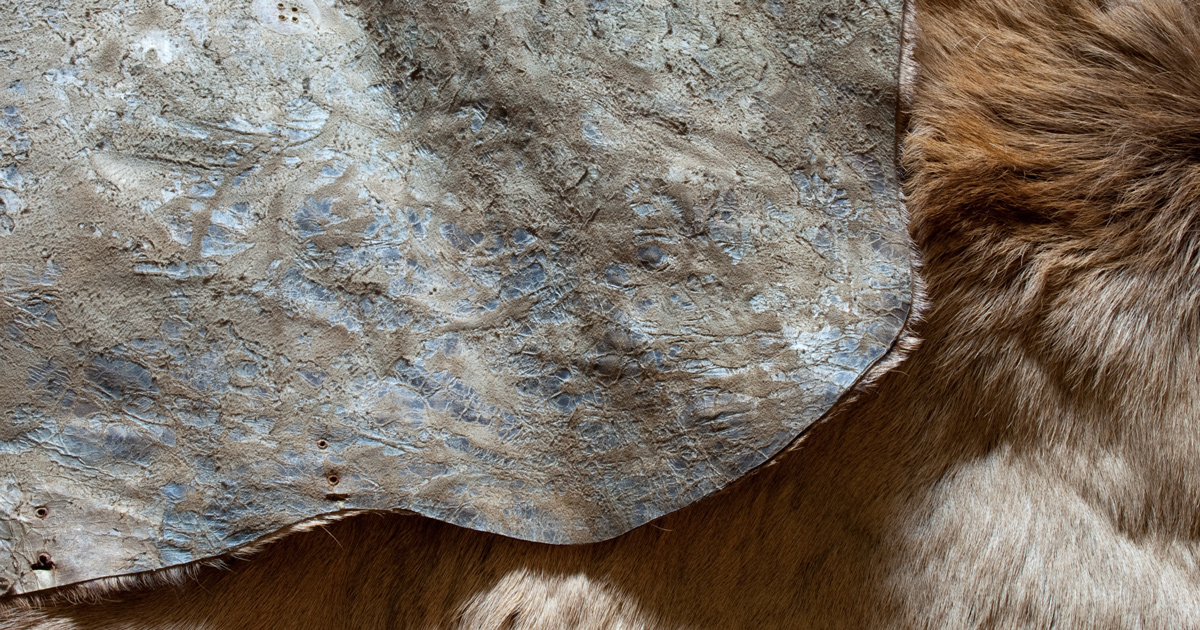At Fort Clatsop, Lewis laments a “want of [animal] branes” and lye soap with which to make leather. He sends Pvts. Werner and Howard to fetch some salt from the Salt Makers’ Camp. He also says that the root of the giant horsetail plant eaten by Clatsop People tastes insipid.
Out of Salt
by Yellowstone Public Radio[1]Originally aired weekdays by Yellowstone Public Radio during the Bicentennial observance of 2003-2006. Narrated by Hal Hansen. Scripts by Whit Hansen and Ed Jacobson. Produced by Leni Holliman. © … Continue reading
Salt-cured Elk Hide
© 2010 by Kristopher K. Townsend. Permission to use granted under the Creative Commons Attribution-Share Alike 4.0 International license.
Lewis’s journal for this day infers that they were curing their hides with salt. Brain-tanned leather is soft and supple whereas hides cured with salt tend to be stiff and rigid and not an optimal material for clothing.
Going for Salt
This morning dispatched Howard and Warner to the Camp of the Saltmakes for a supply of salt.
—Meriwether Lewis
“the want of branes”
The men of the garison are still busily employed in dressing Elk‘s skins for cloathing, they find great difficulty for the want of branes; we have not soap to supply the deficiency, nor can we procure ashes to make the lye; none of the pines which we use for fuel affords any ashes; extrawdinary as it may seem, the greene wood is consoomed without leaving the residium of a particle of ashes.—
—Meriwether Lewis
Giant Horsetail, Equisetum telmateia
Ecola State Park
© 31 March 2009 by Kristopher K. Townsend. Permission to use granted under the Creative Commons Attribution-Share Alike 4.0 International license.
Insipid Giant Horsetail
The root of the rush used by the natives is a sollid bulb about one inch in length and usually as thick as a man’s thumb . . . . the pulp is white brittle and easily masticated either raw or roasted the latter is the way in which it is most usually prepared for uce. this root is reather insipid in point of flavour, it grows in greatest abundance along the sea coast in the sandy grounds and is most used by the Killamucks and those inhabiting the coast.
—Meriwether Lewis
Weather Diary
aspect of the weather at rise
Wind at rise
Weather at 4 OC. P.M. Wind at 4 OC. P.M. cloudy after rain, hail, thunder & lighting S W cloudy after fair S. W. the sun shown about 2 h in the fore noon when the sun is said to shine ore the weather fair it is to be understood that it bearly casts a shaddow, and that the atmosphere is haizy of a milkey white colour.
—Meriwether Lewis[2]To assist the reader, the editor of this web page has omitted the “Day of the month” column and spelled out some abbreviations.
Experience the Lewis and Clark Trail
The Lewis and Clark Trail Experience—our sister site at lewisandclark.travel—connects the world to people and places on the Lewis and Clark Trail.
Plan a trip related to January 23, 1806:

Fort Clatsop is a High Potential Historic Site along the Lewis and Clark National Historic Trail managed by the U.S. National Park Service. The site is managed by the Lewis and Clark National and State Historic Parks.
Notes
| ↑1 | Originally aired weekdays by Yellowstone Public Radio during the Bicentennial observance of 2003-2006. Narrated by Hal Hansen. Scripts by Whit Hansen and Ed Jacobson. Produced by Leni Holliman. © 2003 by Yellowstone Public Radio. |
|---|---|
| ↑2 | To assist the reader, the editor of this web page has omitted the “Day of the month” column and spelled out some abbreviations. |




